Cala
 Bashny.Net
Bashny.Net
Charismatic and friendly, these animals for decades cause genuine interest in people in many countries.
via Zoopicture
In the mid-1970s, otter (Lat. Enhydra Lutris) gained such popularity among nature lovers, scientists and environmentalists, that his image has become a symbol of the environmental movement. For centuries, the sea otter population inhabited the northern coast of the Pacific, from southern California to northern Japan.
10 photos
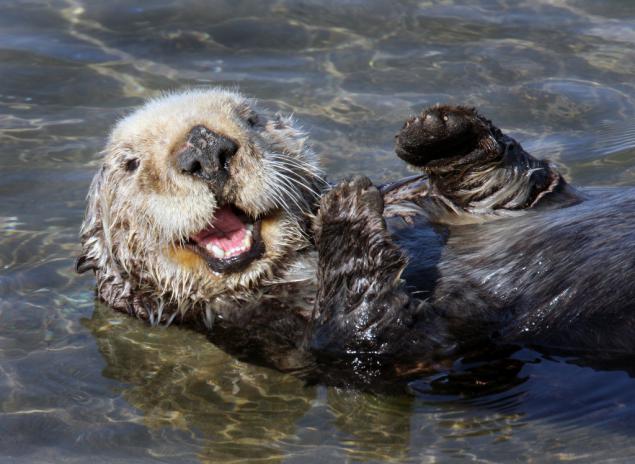
Because of the active fur trade, which lasted from 1750 to the beginning of the 1900s, the population of sea otters significantly reduced - there are only 13 isolated colonies with a total population of about 1000-2000 individuals. In 1911 it signed an international treaty restricting the fur trade and the extermination of sea otters, which led to a gradual recovery in their numbers.
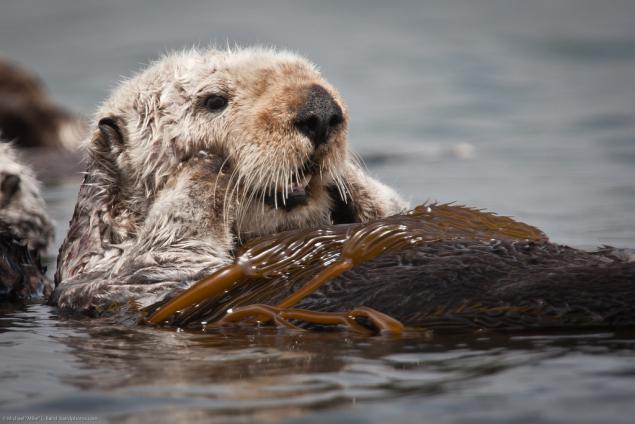
There are only three subspecies of sea otters Cala ordinary (Enhyrda Lutris Lutris), northern sea otter (Enhydra Lutris kenyoni) and the southern sea otter (Enhyrda Lutris Nereis). Common sea otters can be found on the Kuril Islands, Kamchatka and the Commander Islands, the northern sea otters live in the area between the Aleutian archipelago, and the state of Washington.
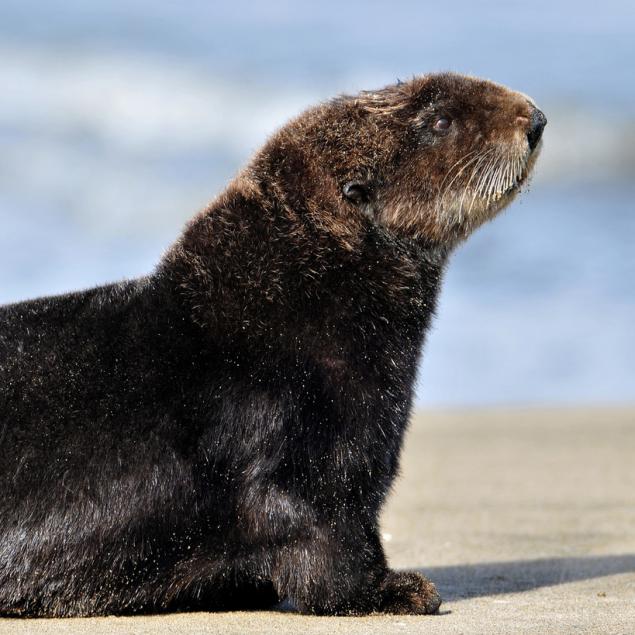
Homeland southern or California, sea otters is Southern California. Populations of the ordinary and the northern sea otter divided roughly 320 km of open water, and the distance between the areas of habitat of the northern and southern sea otters is 965 km.
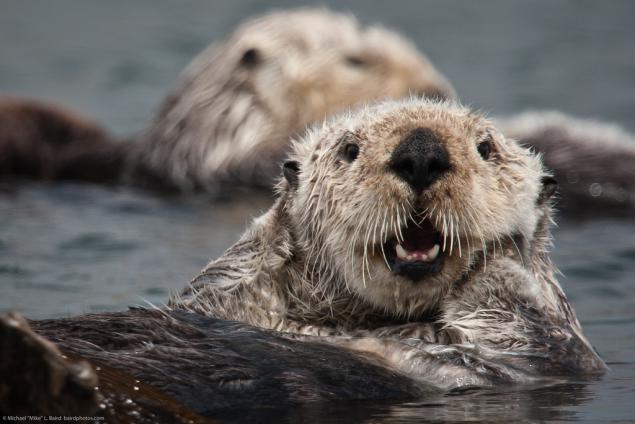
Being the smallest marine mammals in the world, and spend their lives in the harshest environmental conditions, sea otters have adapted to marine life differently than pinnipeds and cetaceans. Otters have no body fat, which most marine mammals are used for energy storage and heat preservation.
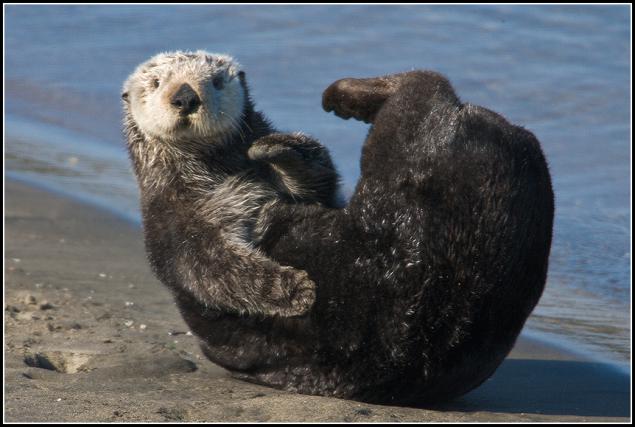
Instead, nature has awarded the densest fur of sea otters of all known mammals - 100,000 hairs per square centimeter. To keep the thermal insulation properties of the fur, sea otters should always comb the hair, providing air access. In the event he goes about ten percent of the time during the day.
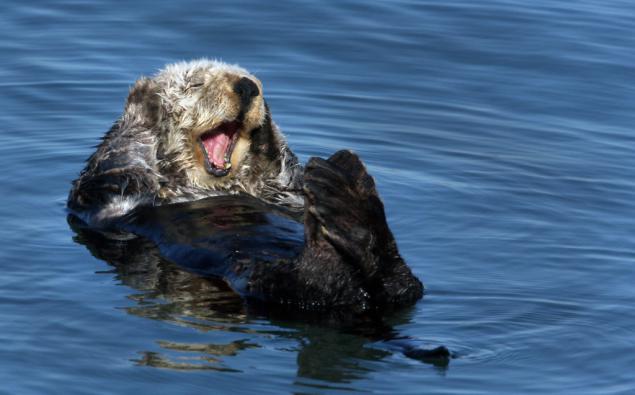
The sea otters prefer eating "buffet" of seafood - clams different, snails, shrimps, crabs, sea urchins, squid, starfish and even some species of fish.
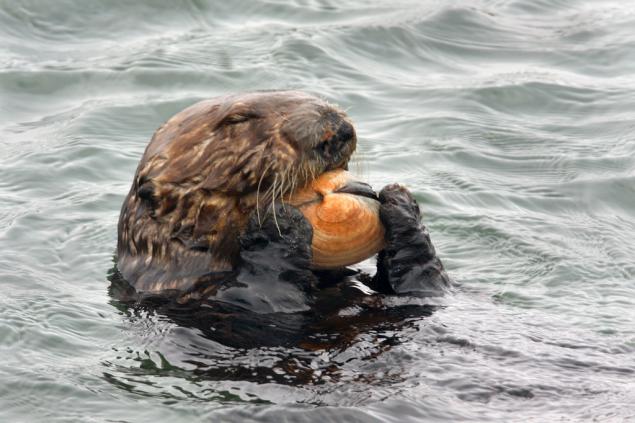
To find food, sea otters use touch, probing the ocean floor for its sensitive front paws, replacing them under the water eye. Dine sea otters lying on his back, using the stomach as a table to spread out comfortably obtained delicacies. Hard shell clams are easy to break stones.
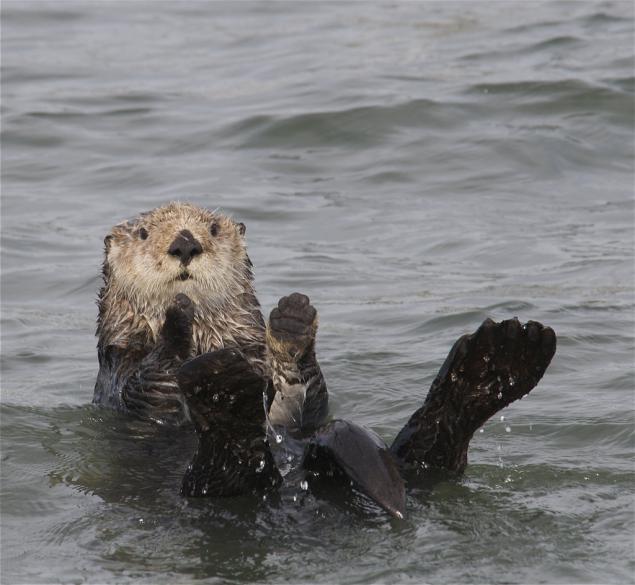
These animals eat huge amounts of food (30 percent of their body weight) every day. Much food they need to maintain a constant body temperature in cold water. Their metabolic rate is 2-3 times higher than in similar-sized terrestrial mammals.
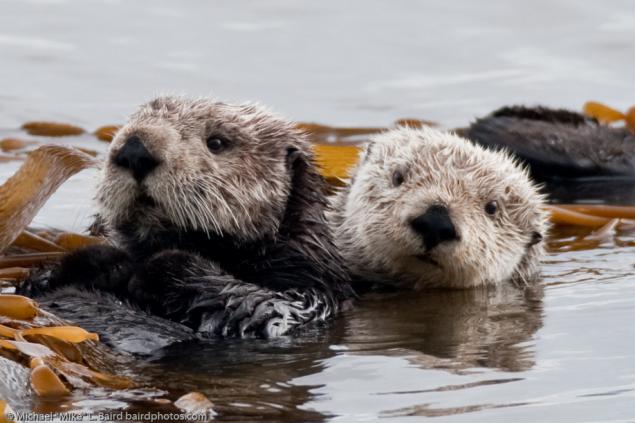
Cala eat, sleep, flirt, hunt, give birth, relax and have fun in the ocean. Cubs are born of sea otters in the water and float like a cork, thanks to a special fur (lanugo), acts as a lifeline for the baby. Two months lanugo goes completely, and a young sea otter can independently float.
All!

Source:
via Zoopicture
In the mid-1970s, otter (Lat. Enhydra Lutris) gained such popularity among nature lovers, scientists and environmentalists, that his image has become a symbol of the environmental movement. For centuries, the sea otter population inhabited the northern coast of the Pacific, from southern California to northern Japan.
10 photos

Because of the active fur trade, which lasted from 1750 to the beginning of the 1900s, the population of sea otters significantly reduced - there are only 13 isolated colonies with a total population of about 1000-2000 individuals. In 1911 it signed an international treaty restricting the fur trade and the extermination of sea otters, which led to a gradual recovery in their numbers.

There are only three subspecies of sea otters Cala ordinary (Enhyrda Lutris Lutris), northern sea otter (Enhydra Lutris kenyoni) and the southern sea otter (Enhyrda Lutris Nereis). Common sea otters can be found on the Kuril Islands, Kamchatka and the Commander Islands, the northern sea otters live in the area between the Aleutian archipelago, and the state of Washington.

Homeland southern or California, sea otters is Southern California. Populations of the ordinary and the northern sea otter divided roughly 320 km of open water, and the distance between the areas of habitat of the northern and southern sea otters is 965 km.

Being the smallest marine mammals in the world, and spend their lives in the harshest environmental conditions, sea otters have adapted to marine life differently than pinnipeds and cetaceans. Otters have no body fat, which most marine mammals are used for energy storage and heat preservation.

Instead, nature has awarded the densest fur of sea otters of all known mammals - 100,000 hairs per square centimeter. To keep the thermal insulation properties of the fur, sea otters should always comb the hair, providing air access. In the event he goes about ten percent of the time during the day.

The sea otters prefer eating "buffet" of seafood - clams different, snails, shrimps, crabs, sea urchins, squid, starfish and even some species of fish.

To find food, sea otters use touch, probing the ocean floor for its sensitive front paws, replacing them under the water eye. Dine sea otters lying on his back, using the stomach as a table to spread out comfortably obtained delicacies. Hard shell clams are easy to break stones.

These animals eat huge amounts of food (30 percent of their body weight) every day. Much food they need to maintain a constant body temperature in cold water. Their metabolic rate is 2-3 times higher than in similar-sized terrestrial mammals.

Cala eat, sleep, flirt, hunt, give birth, relax and have fun in the ocean. Cubs are born of sea otters in the water and float like a cork, thanks to a special fur (lanugo), acts as a lifeline for the baby. Two months lanugo goes completely, and a young sea otter can independently float.
All!

Source:
Tags
See also
6 great names of contemporary street art
Georg Gakkenshmidt "Russian Lion" (1878-1968).
About defectiveness
Rain of black birds
Strange vegetables
How to call a brownie?
How to call houses (8 photos)
Do pigs have problems with self-identity
How to call a brownie

















